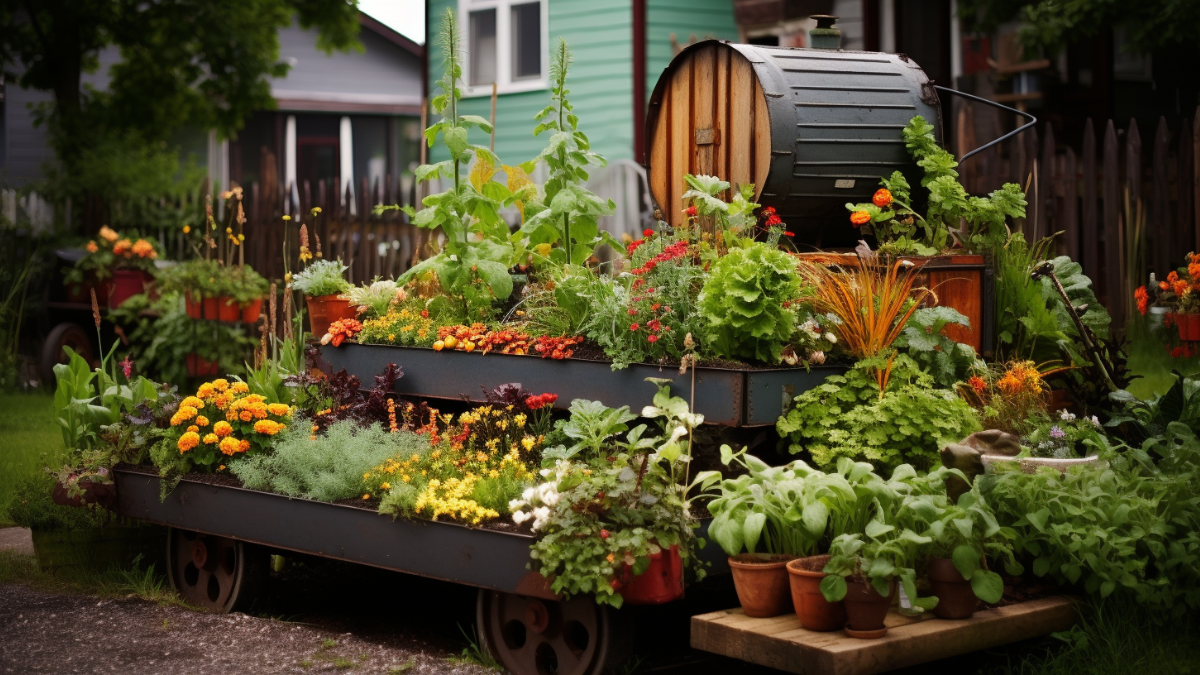Picture a garden where plants thrive in harmony, each contributing to the success of its neighbor. This is the enchanting world of companion gardening – a practice that taps into nature’s wisdom to create symbiotic relationships among plants. In this exploration of companion gardening, we will uncover the secrets of this ancient technique, its benefits, and how you can harness its magic to transform your garden into a flourishing oasis.
Setting the Stage: The Essence of Companion Gardening
Companion gardening is more than just placing plants next to each other; it’s about crafting a living tapestry of flora where each plant fulfills a specific purpose that enhances the well-being of its companions. This practice draws inspiration from the natural world, where plants have evolved to interact and support each other in diverse ecosystems. By mimicking these harmonious relationships, gardeners can achieve healthier and more productive gardens.
Nature’s Perfect Partnerships
The art of companion gardening lies in understanding the intricacies of plant interactions. Some plants, for instance, possess natural abilities to deter pests or improve soil fertility. These qualities make them ideal companions for other plants that might benefit from such attributes.
For instance, the classic example of marigolds and tomatoes showcases the power of companion planting. Marigolds emit a fragrance that repels harmful insects, helping to protect tomato plants from infestations. Likewise, the deep-rooted marigolds also contribute to soil health by suppressing nematodes – microscopic worms that can damage plant roots. By pairing these two plants, gardeners create a dynamic duo that supports each other’s growth.
The Symphony of Diversity
Companion gardening is a celebration of biodiversity. By intermingling different plants, you not only enhance the visual appeal of your garden but also increase its resilience against pests and diseases. Diverse plantings confuse pests, making it difficult for them to locate their preferred hosts. This leads to reduced pest pressure and the need for fewer chemical interventions.
A Delectable Collaboration: Culinary Companion Gardening
Companion gardening also extends to the world of culinary delights. Gardeners who grow their own vegetables often appreciate the art of combining plants that not only grow well together but also complement each other on the plate.
Basil and tomatoes, for instance, share a strong partnership both in the garden and the kitchen. Basil’s aromatic leaves repel insects that commonly afflict tomatoes, while the tomatoes’ tall growth provides the basil with much-needed shade during hot summer days. Moreover, these two ingredients are classic companions in Italian cuisine, making them a match made in both the garden and the culinary world.
Unlocking Nutritional Synergy
Beyond pest management and flavor pairing, companion gardening also takes into account the nutritional needs of plants. Some plants have the remarkable ability to enhance soil fertility by fixing nitrogen from the air and making it available to other plants. This process is exemplified by the three sisters – a Native American gardening tradition that combines corn, beans, and squash. The corn provides a vertical support for the beans to climb, while the beans enrich the soil with nitrogen. The sprawling squash leaves create a natural mulch that retains soil moisture and suppresses weeds. Together, these three plants form a self-sustaining ecosystem that nourishes both body and soil.
The Art of Layout: Planning Your Companion Garden
Successful companion gardening requires thoughtful planning. Begin by researching which plants have beneficial relationships with each other and those that should be kept apart due to potential conflicts. Keep in mind the growth habits, light requirements, and spacing needs of each plant to ensure they coexist harmoniously.
Intercropping – the practice of planting different crops together in the same space – is a common technique in companion gardening. For instance, you could pair tall sunflowers with low-growing lettuce or radishes. The sunflowers provide shade to the tender lettuce leaves while also attracting pollinators that benefit both crops.
The Circle of Life: Beneficial Insects and Pollinators
Companion gardening isn’t just about plants; it also considers the vital role of insects in the garden ecosystem. Certain plants attract beneficial insects that prey on harmful pests, creating a natural balance that reduces the need for chemical interventions. By planting nectar-rich flowers, such as calendula or alyssum, you can attract pollinators like bees and butterflies that enhance fruit and seed production in nearby plants.
A Journey of Experimentation
Companion gardening is as much an art as it is a science. While established companion planting guidelines exist, there’s also room for experimentation and discovery in your garden. Each growing season provides an opportunity to refine your companion planting strategies based on your observations and experiences.
As you embark on your companion gardening journey, remember that this practice is a tribute to nature’s intricate connections. By harnessing the power of beneficial relationships between plants, you can create a thriving garden that embodies the wisdom of the natural world. So, the next time you step into your garden, envision the vibrant tapestry of plants working in harmony, each contributing its unique qualities to a symphony of growth and abundance.



